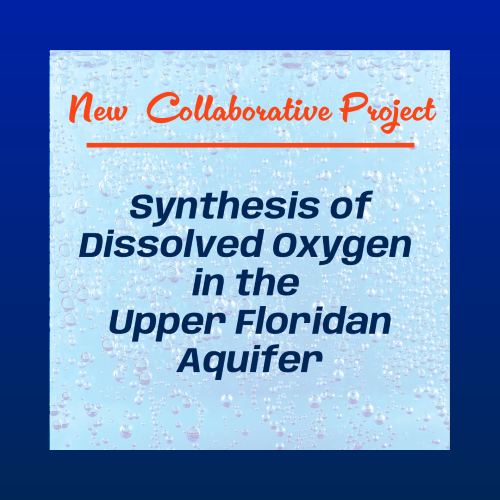Water Institute Collaborative Project Aims to Understand Dissolved Oxygen in the Upper Floridan Aquifer
The Water Institute is partnering with the Florida Department of Environmental Protection on a new project that explores the complexities of dissolved oxygen in the Upper Floridan Aquifer. Dissolved oxygen is a critical component of water quality, playing a vital role in regulating biogeochemical processes and shaping aquatic ecosystems. Although it is well established that oxygen both drives and responds to redox reactions that influence drinking water safety, nutrient dynamics, and ecosystem health, our understanding of dissolved oxygen behavior in the Upper Floridan Aquifer remains limited.
This project builds on earlier research that has revealed how variable and nuanced dissolved oxygen concentrations can be within the aquifer. For example, dissolved oxygen levels have been shown to differ markedly between confined zones (where a clay layer limits groundwater movement) and unconfined zones (where water flows more freely), and even between spring vents clustered near each other.
The project, titled “Synthesis of Dissolved Oxygen in the Upper Floridan Aquifer”, seeks to unravel the complex dynamics of geological, biological, and chemical processes driving the level of dissolved oxygen in groundwater and freshwater springs. Led by Water Institute Director, Dr. Matt Cohen and Water Institute affiliate faculty Drs. Brent Christner, Jim Jawitz, and Jon Martin, the two-year project will convene an advisory panel of spring and groundwater data experts to guide efforts, synthesize existing groundwater well and spring data, develop spatial and temporal models, and design and test methodology for citizen science field sampling of private wells. These efforts aim to improve the understanding and predictability of dissolved oxygen in the Upper Floridan Aquifer, its impact on water quality, and inform management decisions to help protect the state’s freshwater resources.
May 20, 2025


